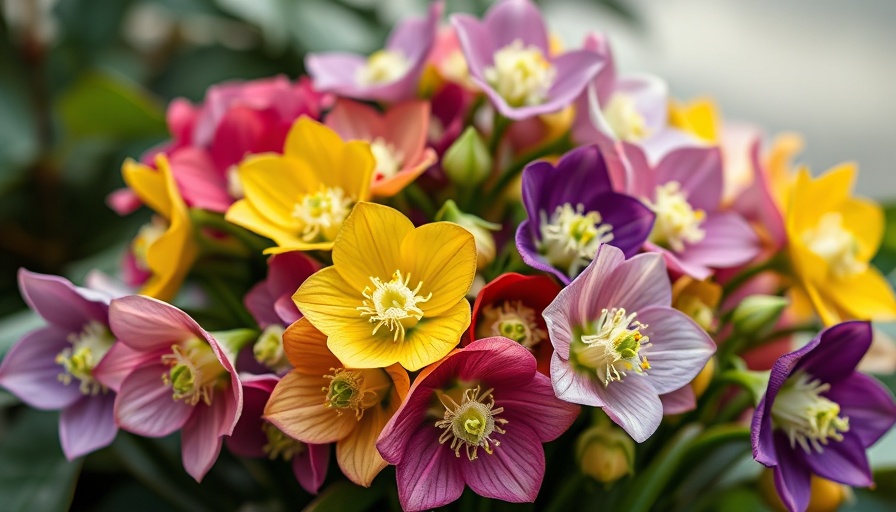
Hooray for Hellebores! Celebrating the Winter Blooms that Inspire Gardeners
When winter takes its grip, hellebores emerge as the unsung heroes of the garden, welcoming the season's end with vibrant blooms. Known affectionately as the Lenten rose, these elegant flowers captivate gardeners with their beauty and resilience, bringing life to otherwise stark landscapes. They flourish in shady conditions, blooming even while the ground is still blanketed in snow, making them a cherished addition to any winter garden.
Understanding the Beauty of Hellebores
Hellebores, belonging to the Helleborus genus, are celebrated for their unique qualities. With about twenty species and numerous hybrids, these delicate perennials boast an impressive palette of colors including whites, pinks, greens, and deep purples. The exceptional variation in flower shape and color allows gardeners to craft visually striking displays that brighten up even the darkest corners of a winter garden.
Varieties of Hellebore to Brighten Your Garden
Among the most popular varieties of hellebores are:
- Helleborus orientalis: This early bloomer offers a stunning variety of colors and patterns. Its deep green, serrated leaves frame exquisite flowers that can range from bold pinks to muted pastels.
- Helleborus niger: Aptly named the Christmas Rose, its pure white blooms emerge in late winter, turning pink as they age, offering a delightful fragrance alongside visual appeal.
- Helleborus foetidus: Known for its greenish flowers and unique aroma, this variety might not be a favorite for all, but it contributes significantly to biodiversity in a garden.
With this diversity, hellebores can occupy various roles within landscaping, from container gardens to under tree canopies, enriching the visual tapestry of any garden.
How to Cultivate Hellebores Effectively
Successfully growing hellebores requires understanding their needs:
- Location: Best in partial to full shade, hellebores thrive beneath deciduous trees where they can bask in winter sunlight while enjoying cool summer shade.
- Soil: Rich, well-draining soil is essential. Amending soil with organic matter before planting can help improve drainage and nutrient levels.
- Water: These hardy plants appreciate consistent moisture during their first year but can adapt to drier conditions as they mature. Care should be taken to avoid waterlogged roots.
Making sure that hellebores receive the right amount of care can lead to years of stunning blooms and enjoyment.
Common Challenges and How to Overcome Them
While hellebores are low-maintenance, they can face challenges such as pests and diseases. Aphids might appear, but they can be managed through appropriate sanitation practices. Moreover, monitoring for common diseases like black death, caused by aphids, can help maintain the health of these beautiful plants. If problems arise, addressing them promptly is key to keeping hellebores thriving.
The Joy of Spring Blooms
As these flowers break through the snow, they symbolize resilience and renewal in a garden. Their long-lasting nature ensures you'll enjoy their beauty for weeks, if not months, allowing for a smooth transition into the vibrant blooms of spring. Plus, these early flowers are essential for welcoming pollinators back to our gardens, a vital part of ecosystem health.
Why Hellebores Matter to Gardeners
For gardening enthusiasts, hellebores are more than just flowers; they embody the spirit of perseverance in the garden. Their ability to bloom in tough conditions makes them quintessential in the journey of seasonal gardening. Adding these beauties to your landscape promotes a richer, more diverse environment that supports both plant and animal life.
Ready to enhance your garden design with these stunning winter gems? Embrace the magic of hellebores this season! Their charm and resilience can transform your garden into a haven that celebrates the beauty of nature in every season!
 Add Row
Add Row  Add
Add 




Write A Comment